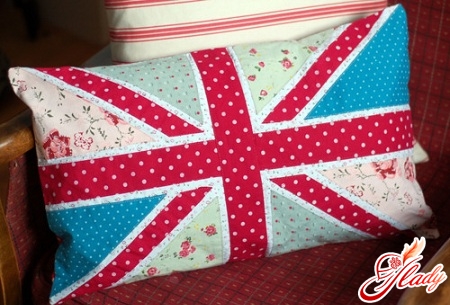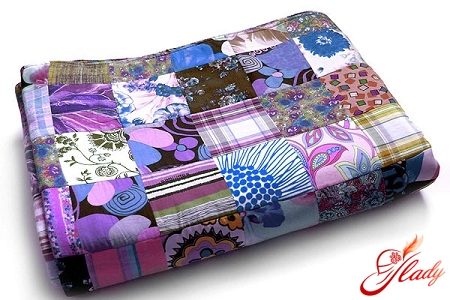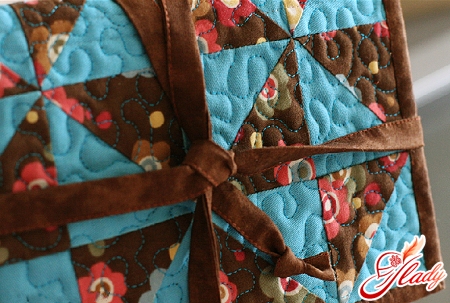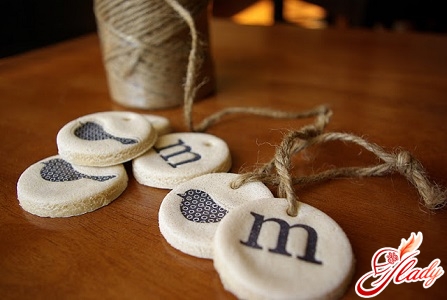 It is always difficult to begin. And any needlework must first be learned. This is only later, when you become an experienced craftsman, handicraft creativity begins to give pleasure. And at first ... And it does not turn out all at once, and the hands still do not obey, and the eye is brought down. Yes, you never know what difficulties a novice needlewoman might encounter! But, fortunately, there is always the experience of their predecessors to help beginners. And mastering, for example, patchwork, it is necessary to take this experience into service. We offer you a small selection of tips and secrets from the category of "patchwork for beginners".
It is always difficult to begin. And any needlework must first be learned. This is only later, when you become an experienced craftsman, handicraft creativity begins to give pleasure. And at first ... And it does not turn out all at once, and the hands still do not obey, and the eye is brought down. Yes, you never know what difficulties a novice needlewoman might encounter! But, fortunately, there is always the experience of their predecessors to help beginners. And mastering, for example, patchwork, it is necessary to take this experience into service. We offer you a small selection of tips and secrets from the category of "patchwork for beginners".
Preparation for work
The key to success in patchwork is precision andaccuracy. Therefore, it is necessary to make the patterns of details as precisely as possible and to sew these details very carefully. For all tissues, pre-treatment is called decalcification. The fabric is first soaked or washed, and then dried and thoroughly ironed. After that, the fabrics are sorted by the colors and they start to make templates. Patterns are cut out according to the shape of the future part, taking into account allowances for seams. They are made of cardboard or heavy paper. To maintain the exact dimensions, paste a millimeter paper onto the cardboard, and then cut out the desired shape of the required size from it. For curvilinear templates, longitudinal contours are made on the outer contour, it is more convenient to mark the seams when joining the parts. 
Choosing a Pattern
Of course, the greatest satisfaction is deliveredpatchwork made of complex patterns. For such masterpieces take a variegated fabric or a material of contrasting colors. However, it's best to start with the simplest drawings, choosing the tested and tested schemes. How to choose a pattern? There are three main types of products made in the technique of patchwork sewing.
- Cloth, collected directly from the flaps. In this case, small pieces of fabric are joined together, the seam in the seam. The flap can be either of the correct geometric form (traditional patchwork), or arbitrary (Crazy-patchwork).
- Quilted products (quilting), sew from a whole piece of fabric. In this case, the pattern is created using stitches.
- Application. In this technique, pieces of other tissue are placed on the main tissue, sewed or quilted.
The pattern can be made from one repeating detail(figures). For this, according to tradition, a paper template is cut out for each part, and then the fabric is labeled to the paper. Then the allowance for the seam is wrapped over the edge of the template and again is indicated manually. This is an ancient English way, which is considered one of the very first patchwork techniques. But there is also a less complex, more modern and popular (especially in America) technique. This is the technique of working with blocks. In blocks, triangular or rectangular (more often square) pieces of fabric are sewn, folding into a geometric pattern. The simplest blocks are made up of a small number of large parts. Such rags are easier to sew, and it takes less time to make them. The names of the blocks depend on the number of parts from which they are sewn:
- The nine-piece block is made up of nine squares,
- The five-piece block is made up of twenty-five squares,
- The four-part unit includes four to sixteen parts.
In addition, technology is quite commonpatchwork sewing from strips. It is similar to the sewing technique of blocks, only the flaps are first assembled into strips in width in one piece, and then these strips are sewn into the web. Both these techniques (blocks and strips) are more convenient, since the rags are immediately spent on the sewing machine. In the patchwork patchwork flaps are joined by the principle of application, when individual small pieces of fabric of arbitrary shape are superimposed on the entire canvas and sewn to it. The product in this case is obtained in two layers. However, more experienced masters and in the cracks-patchwork use the technique of a single-layer fabric.
Working with iron
An iron in patchwork is one of the necessarytools. In the process of work, seams need to be smoothed out, and when preparing fabrics for work, they also need to be ironed. Ready-made patchwork is only worn on the front side and always in the same direction. The stitches are also ironed in one direction, as a result of which they become stronger, and the edges do not crumble. Allowances for seams are only ground from the underside, so that there are no smoothed traces on the front side of the product. When working with complex blocks that have multidirectional seams, the allowances of the first row are grooved in one direction, while the next allowances are in the opposite direction. On the front side, iron the web at the intersection points of the seams. Long stripes of rags are placed on the ironing board not horizontally, but vertically (perpendicular to the board). With this method, the strips are not wrinkled or stretched. Particularly dense fabrics moisturize or use an iron with a steamer before starting the ironing. To iron the fabric is necessary by the share thread and in the temperature regime corresponding to the type of fabric. 
Cutting rules
For cutting it is more convenient to use templates,executed in the form of a frame. The inside of the frame corresponds to the dimensions of the part in the finished product, and the outer side is identical to the size of the part with allowances for the seams. Strictly speaking, the width of the frame itself is the size of the allowances. When making a pattern, the frame is drawn on both sides, and the detail is cut out along the outer contour. The inner contour line indicates the seam line. Apply a pattern on the fabric only with a pencil (chalk, soap), since the marks from the ball or gel pen can be seen from the front side. Cloth fabrics exclusively on the share thread, so that in the finished product the sewn gussets do not warp and do not stretch. To cut out the cloth flaps, you can use ordinary scissors or a special roller knife (cutter). Cutter significantly reproaches the work process, allows you to cut off immediately long strips, which then can be cut into separate elements: rhombuses, squares, triangles. A roller knife is especially useful when working with curved cutting lines.
Secrets of neat sewing
Inaccurately stitched parts, uneven seams andeven millimeter differences in the size of the same elements can nullify all previous efforts. Therefore, the flaps should be cut as accurately as possible and sewn flawlessly. For beginner craftsmen, it is recommended to use only frame templates made with millimeter paper, and always apply to the pattern of the seam line. Before you start sewing the canvas is better to make a "test throw". That is, to sew a sample block. This will allow you to check the accuracy of cutting the flaps and adjust the settings of the sewing machine. All errors will be immediately visible on the sample, and you can save time and effort, correcting errors only after trial sewing, and not in the middle of the process (when most of the canvas is already assembled). In general, to flap sewing should be approached thoughtfully. Wrong color combinations of fabrics and the more inaccurate work can spoil any product and forever discourage the desire to engage in patchwork. And needlework is interesting, exciting and fashionable. So do not be afraid to start, just follow the rules of patchwork sewing and do not neglect the experience you have already gained. And you will succeed! We advise you to read:









